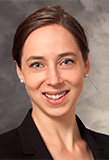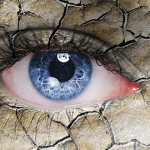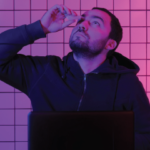 Future Treatments Hold Promise
Future Treatments Hold Promise
Editor’s note: ACR on Air, the official podcast of the ACR, dives into topics important to the rheumatology community, such as the latest research, solutions for practice management issues, legislative policies, patient care and more. Twice a month, host Jonathan Hausmann, MD, a pediatric and adult rheumatologist in Boston, interviews healthcare professionals and clinicians on the rheumatology front lines. In a series for The Rheumatologist, we provide highlights from these relevant conversations. Listen to the podcast online at acronair.org, or download and subscribe to ACR on Air wherever you get your podcasts. Here we highlight episode 88, “Sjögren’s Disease,” which aired on Oct. 22, 2024.
Sjögren’s disease is evolving as physicians and researchers better understand its causes and types.
One recent change has been a renaming, from Sjögren’s syndrome to Sjögren’s disease, said Sara McCoy, MD, PhD, a rheumatologist, physician-scientist and the director of the University of Wisconsin Health Sjögren’s Disease Clinic, Madison.
“Patients just didn’t like the concept of a syndrome being an ill-defined pathologic process when we have moved toward understanding the pathogenic process driving Sjögren’s,” said Dr. McCoy, who is co-chair for the Sjögren’s OMERACT working group and is on the Board of Directors for the Sjögren’s Foundation.1

Dr. McCoy
Dr. McCoy described Sjögren’s as causing the characteristic dry eye and dry mouth with, sometimes, other organ involvement. “Ultimately, it’s a severe dryness due to autoimmune exocrinopathy,” she said.
In addition to primary Sjögren’s, some patients may be diagnosed with associated Sjögren’s—the type of Sjögren’s that occurs along with another autoimmune disease.
Identifying patients who may need further testing for Sjögren’s can get tricky, Dr. McCoy acknowledged, because it’s not always clear at first if dryness is caused by Sjögren’s or something else.
If a patient endorses dryness, Dr. McCoy outlined some basic questions you can ask. If you get affirmative answers to these questions, your suspicion of Sjögren’ disease should increase.
For patients with dry eye:
- Do you have a recurrent sensation of sand or gravel in the eye? “That’s what patients will feel a lot of times upon wakening,” she said.
- Have you had dry eye daily for more than three months?
- Do you have to use tear substitutes more than three times a day?
For patients with dry mouth:
- Have you had dry mouth for more than three months?
- Do you have to take a sip of water to swallow a saltine cracker?
- Have you ever had recurrent or persistent swelling of the salivary glands?
Drilling Down a Diagnosis
If a patient comes to Dr. McCoy’s clinic with dryness, she will perform a Schirmer’s test and a salivary flow test at the same time. A Schirmer’s test involves the use of special paper to test tear production in the eye over five minutes. An unstimulated salivary flow test measures the amount of saliva passively produced by a patient within five minutes after clearing out their mouth in advance. Passive saliva collection is akin to drooling for five minutes. Dr. McCoy will have patients do both tests at the same time for efficiency.

